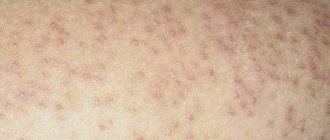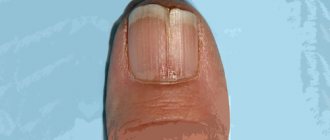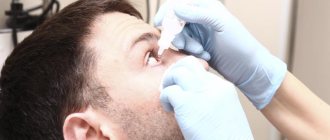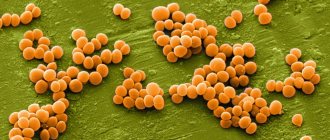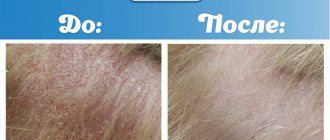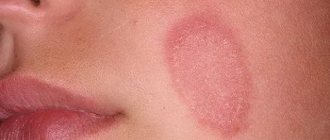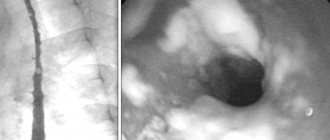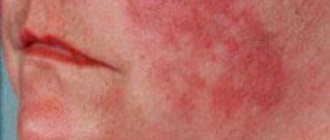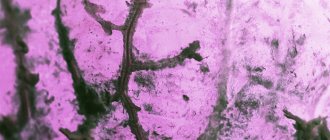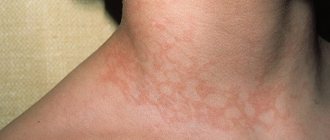Bacterial skin infections are a large group of diseases initiated by pathogenic bacteria and characterized by damage to the skin and soft tissues. They are considered one of the most common in dermatology and can be localized either on a small or large area of skin (within several hours). In terms of severity, such infections are very diverse and range from small nodules to conditions that pose a threat to the patient’s life.
The dermatovenereology department of CELT offers diagnostics and treatment for bacterial skin infections in Moscow. We have been conducting professional activities in the capital's paid medical services market for almost three decades and enjoy a good reputation. Diagnostics are carried out using modern equipment, which makes it possible to detect diseases even at the initial stages of development, and their treatment is carried out in accordance with international standards.
At CELT you can consult a dermatologist.
- Initial consultation – 3,500
- Repeated consultation – 2,300
Make an appointment
Etiology of bacterial skin infections
The most common causative agents of skin infections are staphylococci and streptococci:
| Bacterium | Description of provoked infections |
| Staphylococcus | One of the representatives of the Staphylococcaceae family, which is a gram-positive coccus. Distributed in soil and air, it can be part of the normal skin microflora of humans and animals. Pathogenic and opportunistic staphylococci, which can cause diseases, affect not only the skin, but also the nasal or oral pharynx. These species include Staphylococcus aureus, epidermal and hemolytic staphylococci, which cause eczema, psoriasis, dermatitis, and purulent lesions of the skin. They enter the body through damaged skin and hair follicles. Risk groups - patients:
|
| Streptococci | They represent a genus of ovoid or spherical gram-positive anaerobic bacteria of the Streptococcaceae family. They are parasites of humans and animals that live in the oral and nasal cavities, digestive tract and large intestine. Despite the fact that today 21 groups of streptococci have been identified, the most common are considered to be groups “A”, “D”, “F”, which parasitize the skin, neck, and nasal cavity. They enter the body through the respiratory tract and mouth. The following skin infections are caused by:
|
Where to sign up for treatment for viral skin diseases in Moscow?
At the multidisciplinary medical center you can always sign up for treatment for viral skin diseases
. Our medical center is located between the Konkovo and Belyaevo metro stations (South-Western Administrative District of Moscow in the area of the Belyaevo, Konkovo, Teply Stan, Chertanovo, Yasenevo, Sevastopolskaya, New Cheryomushki metro stations " and "Trade Union"). Here you will find highly qualified personnel and the most modern diagnostic equipment. Our clients will be pleasantly surprised by our quite affordable prices.
Types of bacterial skin infections
| View | Skin infection and its features |
| Staphylococcal infections | Superficial folliculitis - characterized by inflammatory processes on the skin with a white purulent center. Most often, the infection affects the hair areas on the arms, legs and thighs, usually after hair removal carried out without observing hygiene standards. May become chronic. |
| Boils are a type of deep folliculitis, characterized by an acute purulent-necrotic inflammatory process of the follicles, sebaceous glands, and connective tissue around them. Most often, the infection is found in the cervical, occipital, femoral areas, on the back and even on the face. In the latter case, it can cause serious complications such as sepsis or meningitis. | |
| Anthrax is another type of deep folliculitis. It is a particularly dangerous infection, characterized by very rapid development and acute course. It is manifested by intoxication, inflammatory processes of the skin, lymph nodes, and internal organs. | |
| Panaritium is an infection characterized by an acute purulent process that affects the fingers of the upper and, less commonly, lower extremities. It manifests itself as pain, swelling, redness, and fever. In later stages of development, surgical intervention is required. | |
| Streptococcal infections | Erysipelas is an infection caused by group A streptococcus. It is characterized by the development of inflammatory processes of a serous or serous-hemorrhagic nature, manifesting themselves as focal lesions of bright red skin with swelling, general intoxication of the body and an increase in temperature. It is one of the most common bacterial infections. |
| Streptoderma is an infection characterized by the development of serous inflammatory processes without suppuration, severe swelling of the affected area, and the rapid formation of blisters or spots prone to peeling. | |
| Abscess - characterized by the formation of a cavity in the subcutaneous fatty tissue or muscles filled with pus. The infection manifests itself with swelling, hyperemia, and pain symptoms. |
Contagious skin diseases
All skin diseases can be divided into two large groups: contagious and non-contagious - i.e. not dangerous to others
The first group includes such common parasitic diseases as scabies and mycoses (fungal skin diseases).
The spread of diseases is facilitated by population migration, overcrowding, insufficient education of the population about the disease, self-medication, late seeking medical help, etc.
Scabies
This is a contagious skin disease caused by microscopic mites that “live” in the top layer of the skin - the epidermis. Infection with scabies occurs through prolonged contact with a sick person, through shaking hands, wearing his clothes, especially underwear, sharing a bed, and not observing personal hygiene rules.
The first symptom of the disease is skin itching, which intensifies at night, when the tick is most active. Small paired pink rashes and scratches appear on the patient’s skin, first in places of favorite localization (thighs, abdomen, interdigital folds of the hands). If the patient does not consult a doctor in a timely manner, the rash spreads to the entire surface of the torso and limbs. A pustular infection is often associated.
If you have scabies, it is unacceptable to self-medicate. Even after a course of outpatient treatment, relapses of the disease sometimes occur. Only a doctor can provide qualified assistance.
Microsporia
The next category of contagious skin diseases is associated with fungal infection. One of the most common diseases is microsporia, or, as it is called in everyday life, “ringworm.” Most often it affects children. Sources of infection can be sick kittens, cats, puppies, and less often - adult dogs. The peculiarity of the disease is seasonal - most people suffer from microsporia from August to October.
The clinical picture is characterized by the appearance on the skin of round, red spots of regular shape with superficial peeling. The peeling scales are contagious.
Some parents aggravate the situation without knowing it by bathing a sick child, contributing to the spread of fungal spores throughout his body. As a result, dozens of new outbreaks arise. If treatment is not started immediately, the infection from smooth skin is transferred to the head, affecting the hair, which, losing vitality, breaks, leaving “stumps” 0.5 to 1 cm long. Hence the name - “ringworm”.
Lice (pediculosis)
This is a contagious parasitic disease caused by lice. There are three types of lice: head, body and pubic. Infection most often occurs through close household contact or the use of the patient’s belongings.
When a lice bites, severe itching occurs, which, in turn, leads to the appearance of multiple linear scratches, which can be complicated by a secondary infection. Pediculosis pubis is characterized by the presence of a rash with a reddish-bluish tint at the sites of bites.
Treatment of lice and scabies in each individual patient should be carried out simultaneously with anti-epidemic measures (disinsection of hats, clothing, bedding and premises, etc.)
Insects are killed using antiparasitic agents.
Trichophytosis
Trichophytosis develops according to the same scenario, the clinical picture of which is similar to microsporia. Its carriers are cats and dogs, rats and mice. Specific fungi - trichophytons - can also be transmitted from cattle. In addition, infection also occurs through close contact with a sick person, using his clothes and bed, but this source of infection accounts for only 5% of the total number of diseases.
Varieties of this type of fungus can affect the skin of the feet. Most often this happens in public showers, where rubber mats are not disinfected or are not regularly disinfected; with those who wash without individual rubberized shoes. Clinical manifestations may be inexpressive: scanty peeling on the soles and in the interdigital folds is almost invisible. And only after years, or even decades, when a person is already in old age, the picture changes radically: peeling intensifies, hyperkeratosis appears - thickening of the heels, nails become yellow or dark gray, easily crumble and break.
Various types of fungi are present on the body of a fairly large number of people, but for the development of diseases favorable conditions are needed: for example, increased sweating of the feet, decreased immunity, endocrine diseases, vascular disorders, close contacts with the patient.
Contagious skin diseases are curable. It is only necessary to promptly contact a dermatovenerologist when the first signs of the disease appear, who will provide qualified assistance and take all necessary measures so that the people around the patient do not become infected.
Prevention
Prevention of contagious skin diseases can be divided into two groups:
- Individual prevention - following the rules of personal hygiene, using only individual clothes and shoes, washing hands, taking a daily shower or bath, using rubber slippers in bathhouses, swimming pools, locker rooms, etc.,
- Preventive measures that are carried out during all types of medical examinations, medical examinations of the population, when a doctor can identify a patient based on the results of a medical examination. In addition, when registering microsporia in an organized group, in order to prevent the spread of the disease among contact persons, sanitary legislation provides for medical supervision of all persons in contact with the patient - three examinations are carried out by a dermatologist with an interval of 15 days. Identified patients are excluded from attending school or kindergarten and are referred for treatment to a dermatologist. At schools and kindergartens, final (after isolation of the patient) and ongoing disinfection are carried out.
Sources
- Weinberger KR., Kulick ER., Boehme AK., Sun S., Dominici F., Wellenius GA. Association Between Hurricane Sandy and Emergency Department Visits In New York City By Age and Cause. // Am J Epidemiol - 2021 - Vol - NNULL - p.; PMID:33910231
- Miller JE., Carter KW., de Klerk N., Burgner DP. The familial risk of infection-related hospitalization in children: A population-based sibling study. // PLoS One - 2021 - Vol16 - N4 - p.e0250181; PMID:33909680
- Herbosa CM., Bhat TS., Semenov YR., Rosman IS., Musiek AC. Diagnostic concordance of clinical diagnosis, tissue culture, and histopathology testing for skin and soft tissue infections: A single-center retrospective study. // Int J Womens Dermatol - 2020 - Vol6 - N5 - p.395-398; PMID:33898706
- Sari MK., Satria CD., Arguni E. Predictors of Infection in Children with Systemic Lupus Erythematosus: A Single Center Study in Indonesia. // Glob Pediatr Health - 2021 - Vol8 - NNULL - p.2333794X211005609; PMID:33889678
- Jones SU., Chua KH., Chew CH., Yeo CC., Abdullah FH., Othman N., Kee BP., Puah SM. spa diversity of methicillin-resistant and -susceptible Staphylococcus aureus in clinical strains from Malaysia: a high prevalence of invasive European spa-type t032. // PeerJ - 2021 - Vol9 - NNULL - p.e11195; PMID:33889447
- Chan ED., Cota-Gomez A., Podell B. Adding Another Piece to the Puzzle of Why NTM Infections Are Relatively Uncommon despite Their Ubiquitous Nature. // mBio - 2021 - Vol12 - N2 - p.; PMID:33879587
- Urie R., McBride M., Ghosh D., Fattahi A., Nitiyanandan R., Popovich J., Heys JJ., Kilbourne J., Haydel SE., Rege K. Antimicrobial laser-activated sealants for combating surgical site infections. // Biomater Sci - 2021 - Vol - NNULL - p.; PMID:33876069
- Scott MM., Liang SY. Infections in Older Adults. // Emerg Med Clin North Am - 2021 - Vol39 - N2 - p.379-394; PMID:33863466
- Lipový B., Mager R., Raška F., Hanslianová M., Blažek J., Křemečková H., Suchánek I., Hladík M. Vibrio vulnificus-Induced Necrotizing Fasciitis Complicated by Multidrug-Resistant Acinetobacter baumannii Infection: Efficacy of Chemical Necrectomy Using 40% Benzoic Acid. // Int J Low Extreme Wounds - 2021 - Vol - NNULL - p.15347346211004305; PMID:33856245
- Monecke S., Müller E., Braun SD., Armengol-Porta M., Bes M., Boswihi S., El-Ashker M., Engelmann I., Gawlik D., Gwida M., Hotzel H., Nassar R ., Reissig A., Ruppelt-Lorz A., Senok A., Somily AM., Udo EE., Ehricht R. Characterization of S. aureus/MRSA CC1153 and review of mobile genetic elements carrying the fusidic acid resistance gene fusC. // Sci Rep - 2021 - Vol11 - N1 - p.8128; PMID:33854075
Skin cancer
Skin cancer is the most common type of cancer and usually develops in exposed areas of the skin. The incidence is highest among workers, athletes and sunbathers and is inversely proportional to the amount of melanin pigmentation in the skin.
Skin cancer can be caused by ultraviolet rays (both solar and artificial), ionizing radiation, polycyclic aromatic hydrocarbons, tar and resin products.
Skin cancer is often asymptomatic at first. The most common presentation is an irregular red or pigmented lesion that does not go away. Any lesion that appears to be enlarging should be biopsied—whether there is tenderness, mild inflammation, crusting, or intermittent bleeding. With early treatment, most skin cancers are curable.
Cost of consultation with a doctor?
| Name of service | Price, rub.) |
| Initial appointment with a dermatologist | 2000 rub. |
| Repeated appointment with a dermatologist | 1500 rub. |
| Primary appointment with an obstetrician-gynecologist | 2000 rub. |
| Repeated appointment with the obstetrician-gynecologist | 1500 rub. |
| Primary appointment with an obstetrician-gynecologist (candidate of medical sciences; doctor of medical sciences) | 2100 rub. |
| Repeated appointment with an obstetrician-gynecologist (candidate of medical sciences; doctor of medical sciences) | 1600 rub. |
| Prescription of treatment (drawing up an individual treatment regimen) | 1500 - 3000 rub. |
All our services and prices
Pigmentation changes
Pigmentation disorders include depigmentation (loss of skin color) and hyperpigmentation (accumulation of skin color). Depigmentation can be caused by chemicals such as hydroquinine, phenol (and its derivatives), arsenic and mercury compounds. It can also be caused by ionizing and ultraviolet radiation, as well as thermal or physical trauma.
Hyperpigmentation can be caused by mineral oils, halogenated hydrocarbons, arsenic and various pharmaceuticals.
